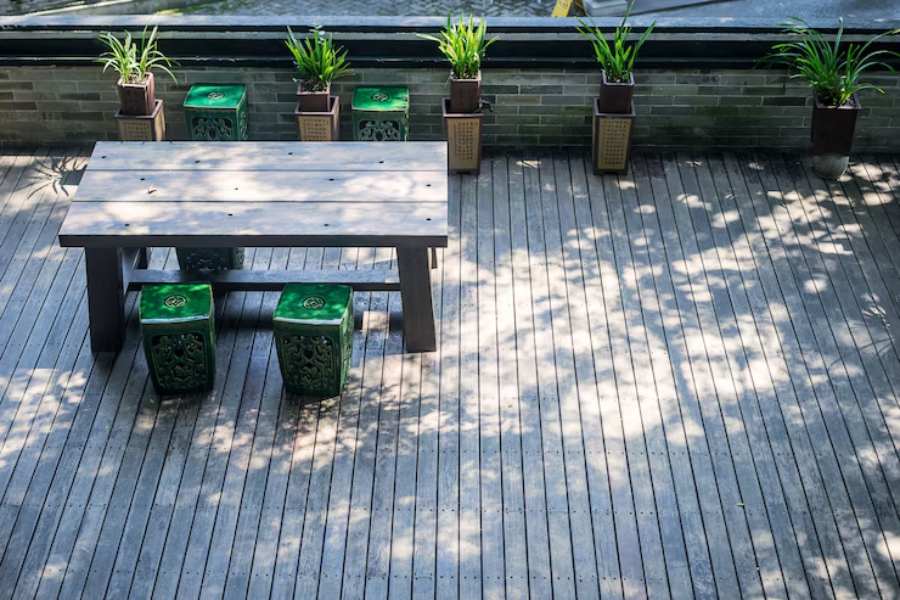A Guide to Choosing the Perfect Decking for Your Outdoor Space

Creating the perfect outdoor space can transform your home, turning a simple backyard into a serene retreat or an entertainment hub. One of the most impactful elements of any outdoor area is the decking.
Decking material is not just about aesthetics; it also affects maintenance, longevity, safety, and your budget. Whether you’re envisioning a cozy corner for your morning coffee or a sprawling platform for hosting summer barbecues, this guide will help you select the ideal decking for your lifestyle and environment.
Understand Your Outdoor Needs
Before diving into materials, consider how you plan to use your deck. Will it be a high-traffic area? Do you expect heavy furniture or grills? Are kids or pets frequent users? Your answers will influence the durability and maintenance level you’ll need. For example, if your deck will host lots of gatherings, a material that resists stains and wear might be more suitable than one that just looks great.
Also consider the climate. A deck in a dry, sunny area like Arizona faces different challenges than one in a humid or rainy region like the Pacific Northwest. Sun, rain, and temperature swings can affect how different materials hold up over time.
Explore Decking Material Options
There are several main types of decking materials, each with its pros and cons:
Pressure-Treated Wood
Pros: Affordable, widely available, and easy to work with.
Cons: Requires regular maintenance, such as staining or sealing; susceptible to warping and splintering over time.
Pressure-treated lumber is a popular budget-friendly option, especially for DIY projects. However, it requires consistent upkeep to stay in good condition.
Hardwoods (e.g., Ipe, Mahogany, Redwood)
Pros: Durable, long-lasting, beautiful natural appearance.
Cons: Expensive, can be difficult to install, requires maintenance to preserve color.
Hardwoods offer a high-end look and excellent performance, especially in climates that are hard on softer woods.
Composite Decking
Pros: Low maintenance, durable, resistant to rot and insects. Available in a wide range of colors and textures.
Cons: More expensive than wood, can get hot in direct sun.
Made from a blend of wood fibers and plastic, composite decking provides the look of wood without the high maintenance. Brands like Trex and TimberTech are popular in this category.
PVC and Plastic Decking
Pros: Very low maintenance, lightweight, resistant to moisture and mold.
Cons: Less natural-looking, can feel less sturdy or too “plastic,” and may be slippery.
PVC is a good choice for areas exposed to water, like around pools or in very wet climates.
Consider Aesthetics and Design
Your deck should complement your home’s style. Traditional homes might pair better with natural wood or composite that mimics wood grain, while modern homes could lean toward sleek PVC or dark-stained hardwoods. Think about color, texture, and board orientation (diagonal, parallel, etc.) when designing.
Lighting, railing, and built-in features like benches or planters can also enhance the look and functionality of your deck.
Think Long-Term: Maintenance and Lifespan
Every material ages differently. Wood may require yearly sealing or staining, while composite and PVC need only occasional cleaning. While low-maintenance materials may cost more upfront, they often save money and time over the long term. Be sure to factor in the cost of upkeep when comparing options.
Budget Wisely
Costs vary widely—from under $2 per square foot for pressure-treated lumber to over $10 for premium composites or hardwoods. Installation, fasteners, finishes, and local labor rates also add to the total cost. Get quotes for both materials and installation if you’re not doing it yourself.
Final Thoughts
Choosing the perfect decking material means balancing beauty, durability, budget, and maintenance. Take time to research, compare samples, and consult professionals if needed. Your outdoor deck is an investment that should bring enjoyment and value for years to come. Whether you go with the classic charm of wood or the low-maintenance appeal of composite, the right choice will turn your outdoor space into a true extension of your home.
